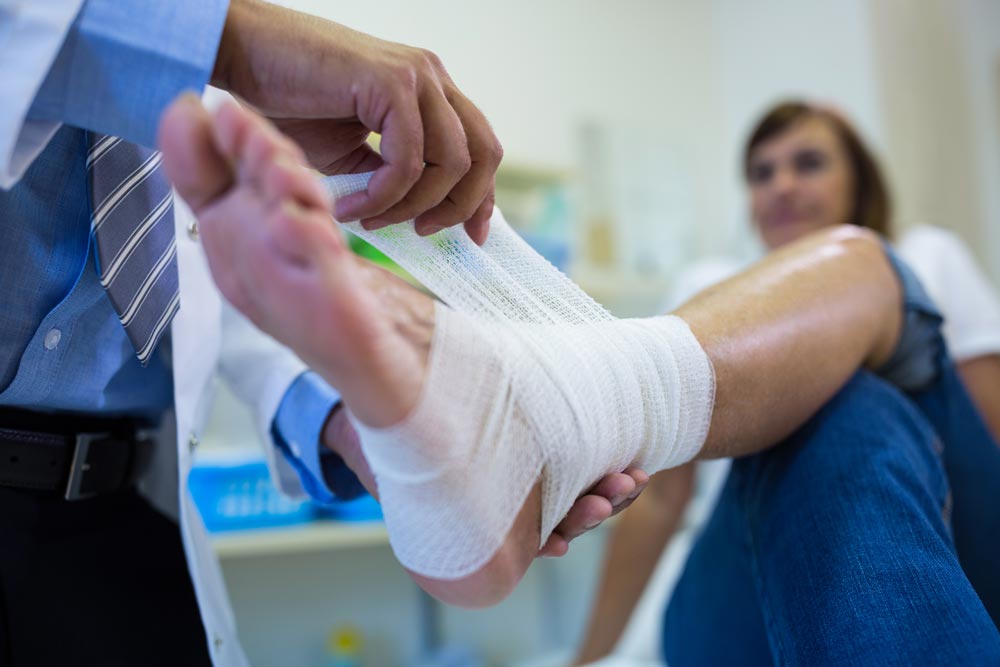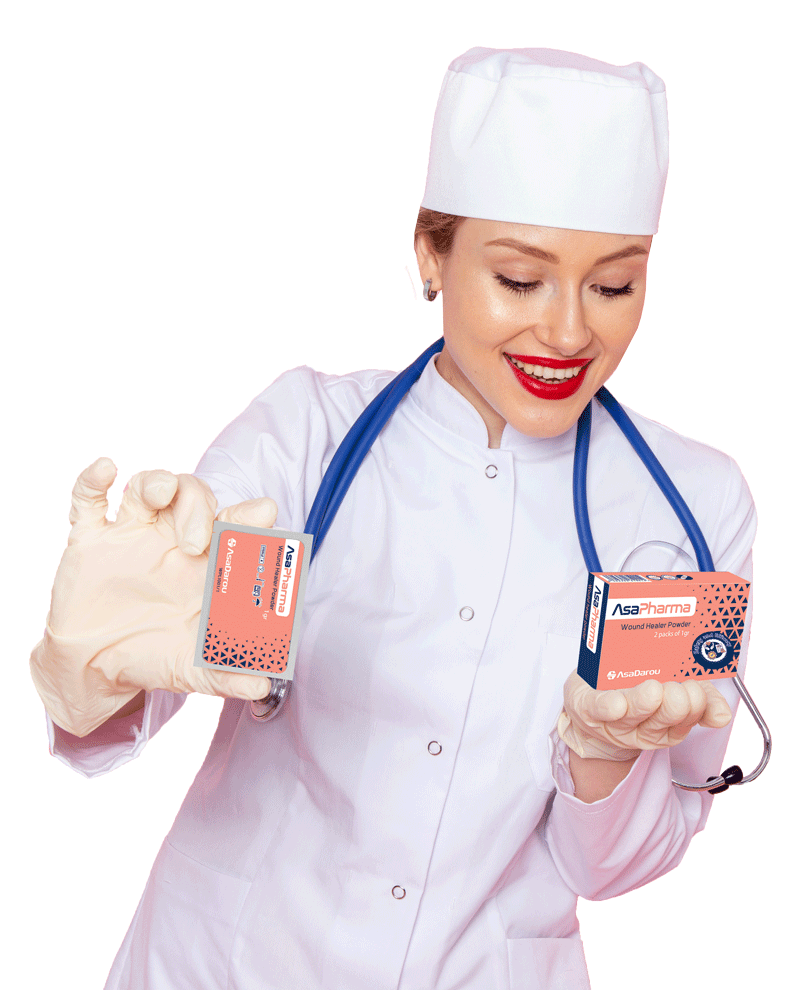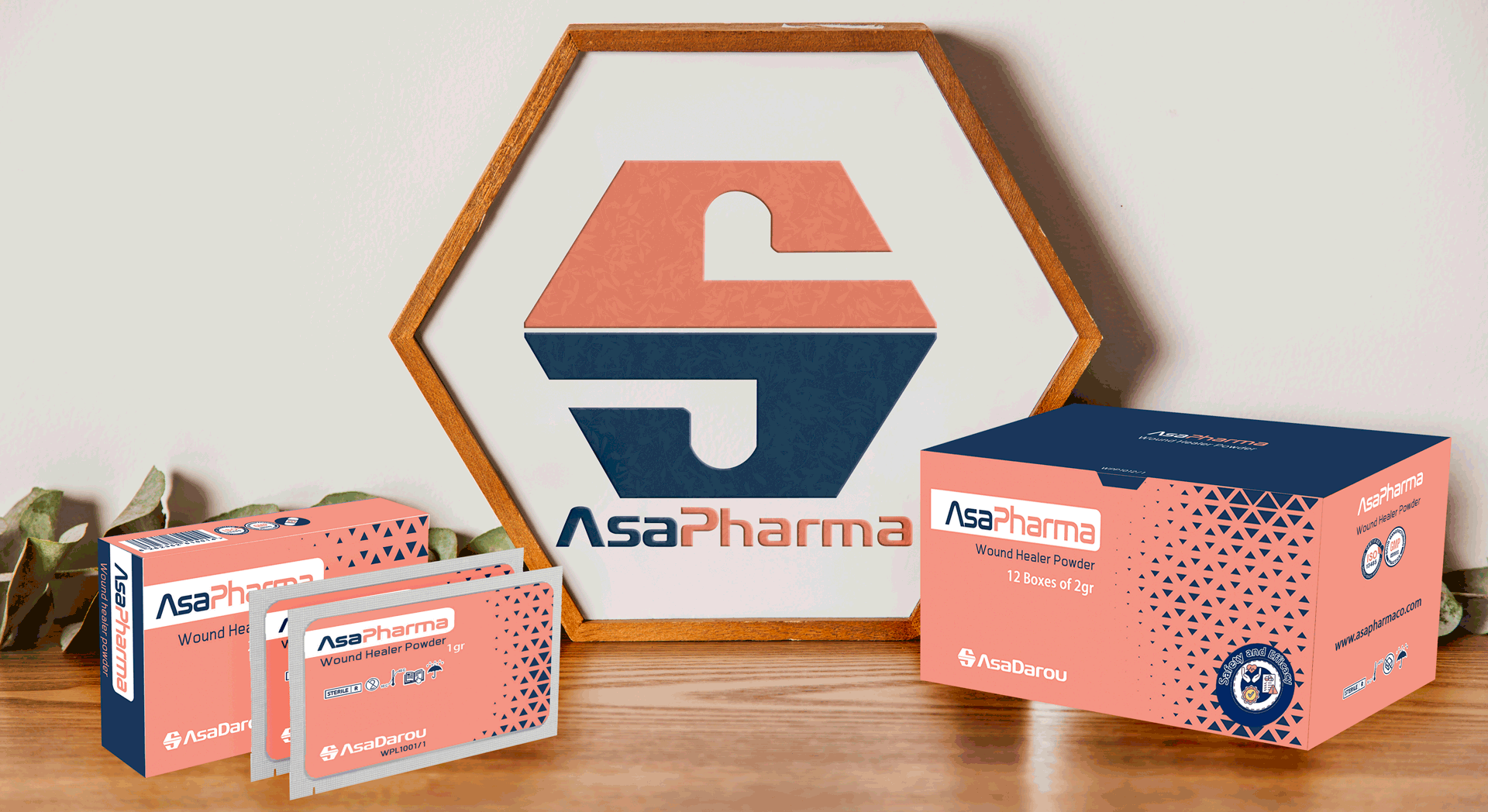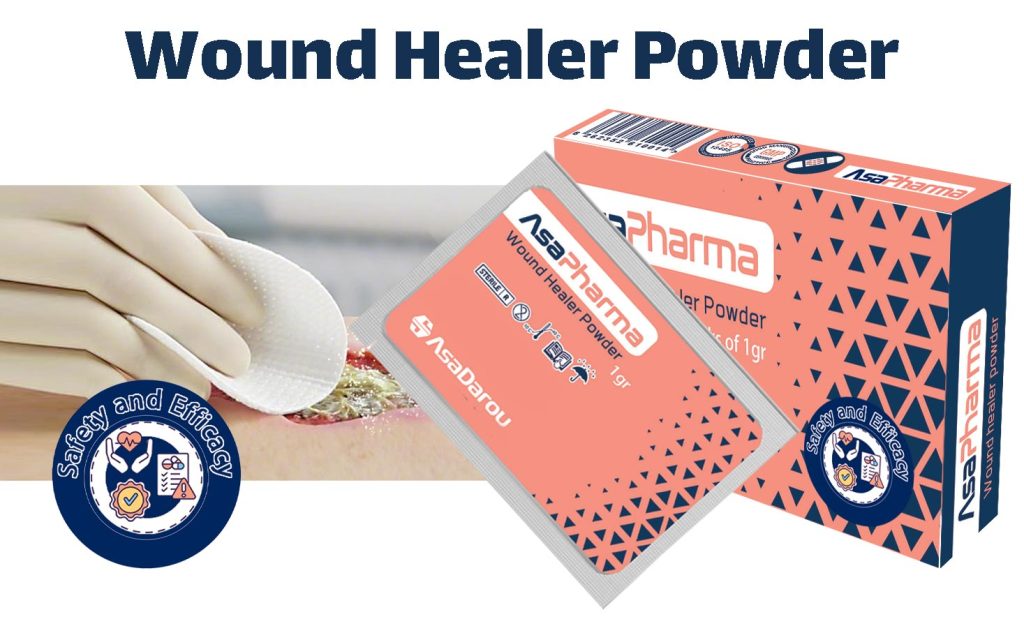Dressing Introduction
Asapharma’s new powder dressing for deep and perforated wounds, as the first group of products produced by Asa Daru Company, has been designed and produced based on the latest medical achievements, scientific and practical principles, and the use of the most effective biologically active natural biopolymers in product formulations, which have had remarkable results in improving various types of acute and chronic wounds.
Open and perforated wounds usually become infected quickly due to the destruction of the underlying layers of the skin, and microbes can quickly enter the deeper layers of the skin and spread, as well as enter the lymph nodes and spread throughout the body through this route. Therefore, the management of a tunnel wound is much more important than superficial wounds. Usually, perforated wounds tend to close, which may cause a closed infection. Therefore, it is imperative to repair and treat the wound before it closes and by removing excess secretions. Asapharma’s granular absorbent dressings, as primary dressings, fill difficult-to-reach cavity wounds, covering the wound healing process from the beginning to the end. With advanced exudate absorption due to the presence of a compound with an absorbent nature, they prevent the development or progression of infection, thus facilitating the process of autolytic debridement, digestion of necrotic tissue, and management of the repair of various tissues involved in the wound and scar.
In fact, the most important effect of Asapharma’s granular dressing is the creation of a gel form in the wound cavity. Why is the creation of a gel structure in the wound cavity important?
The closure of tunnel or cavity wounds leads to the creation of an anaerobic environment favorable for the growth and development of microorganisms. Asapharma’s granular dressings act as a barrier by absorbing secretions and converting them into a gel structure, creating swelling and increasing the volume in the wound cavity, which in addition to preventing the entry and penetration of microbial agents, helps prevent the closure of the wound surface.
The presence of a gel dressing in the wound cavity helps to accelerate the healing process by creating moisture and preventing the formation of dry, necrotic tissues. By increasing the volume of the powder with a gel structure, the dressing completely covers the wound bed so that no area of the wound surface is left without a dressing. The creation of a gel mass causes the dressing to not stick to the wound bed and to be easily removed, as a result, it does not cause any damage to the healing granulation tissue, and the patient will also experience a painless and injury-free dressing change.
- Infected wounds
- Types of pitting wounds
- Types of acute and chronic exudative wounds
- Difficult-access wound beds
- Diabetic wounds
- Decubitus ulcers
- 1st and 2nd degree burns
The mechanism of action of Asapharma Wound Healing Powder begins with controlling inflammation and infection of the wound, removing necrotic tissues, controlling the amount of exudate and excess wound secretions, which are the principles of wound bed preparation, and then leads to complete wound healing with the function of autolytic debridement and creating a long-lasting antibacterial environment. Specifically, Asapharma Dressing Powder activates the wound with four approaches and increases the speed of wound healing with the least amount of scar tissue;
- Converting the dressing from powder form to gel form at the wound site and absorbing exudate
- Accelerating the inflammatory phase as the first stage of wound healing by activating autolytic debridement and the accumulation of immune cells and factors effective in wound healing to stimulate the formation of granulation tissue
- Reducing the duration of treatment by 70% by maintaining optimal moisture and hydration of the wound site and preventing the formation of precursor and necrotic tissue
- Antiseptic function and creating an antibacterial coating on the wound and accelerating wound healing by preventing infection
Benefits and uses of Asapharma Wound Healing Dressing Powder
- Ideal for the treatment of acute and chronic exudative wounds
- Ideal for the treatment of diabetic wounds
- Ideal for the management of skin graft donor and
- recipient site wounds
- Suitable for the repair of superficial and deep 1st and 2nd degree burn wounds
- Can be used alone for granulating and epithelializing wounds
- Prevents drying of deep and pitted wound beds with difficult access
- Reduces the risk of wetting of the marginal edges around exuding wounds
- Removes exudate in wounds with moderate to moderately severe infection
- Suitable for clearing the wound bed of precursor tissue
- Prevents infection in wounds at risk
- Suitable for around orthopedic pins and ostomy equipment

Features of Asapharma Wound Healing Powder
1) Antimicrobial effects and infection treatment:
It leads to the death of the microorganism through various mechanisms such as creating pores in the microorganism wall, preventing DNA replication, and interfering with various cytochromes. Increasing the permeability of particles into the microorganism, producing free radicals and reactive oxygen species, increases its antimicrobial effects.
2) Long-acting antimicrobial formulation:
Asapharma dressing powder has long-lasting antimicrobial effects and the antimicrobial effects will be maintained throughout the entire period of use of the dressing on the wound.
3) Reducing inflammation at the wound site:
Optimal wound healing depends on the precise balance between matrix metalloproteinase enzymes and tissue inhibitors of metalloproteinases, and disruption of this balance leads to the destruction of growth factors and chronicity of the wound. The use of the product and the production of inflammatory cytokines, reducing the function of matrix metalloproteinase enzymes and reducing the concentration of inflammatory mediators, reduces inflammation.
4) Acceleration of the granulation process:
The biopolymers used in the formulation directly increase the growth and mitosis of fibroblast cells and reduce the activity of matrix metalloproteinase enzymes to some extent. As a result, the vicious cycle of chronic wound healing is broken and the granulation and wound healing process is accelerated.
5) Acceleration of the epithelialization process:
Asapharma Wound Healing Powder Dressing plays a significant role in the migration of keratinocyte cells and the repair of epithelial tissue and controls the activity of matrix metalloproteinase enzymes. In addition, according to studies by the company’s researchers and the most up-to-date international scientific articles, it accelerates the epithelialization process by controlling inflammatory cytokines and protease enzymes.
6) Absorption of exudate and wound secretions:
The product formulation provides a large surface area for absorbing exudate and wound secretions, and as a result, it will play a significant role in the management of exudate of highly exuding wounds.
7) Maintaining optimal moisture on the wound surface:
After absorbing secretions and wound exudate, the dressing granules turn into a gel form, providing a moist environment and ideal conditions for the functioning of body enzymes, and also enhancing autolytic debridement.
8) Complete coverage of the wound surface:
The granular structure of the dressing completely covers the wound bed and no area of the wound surface is left without a dressing.
9) Easy to use:
The granular structure and packaging of the product make it easy to use and place the dressing on the wound. In a way that, on the one hand, the performance of the medical staff is greatly facilitated and accelerated, and on the other hand, it can be easily used on wounds with difficult access.
10) No damage to tissue when changing the dressing:
The dressing granules do not stick to the wound bed and are simply removed by washing the wound when changing the dressing, resulting in no damage to the tissue and the patient will experience a painless and injury-free dressing change.
How to use wound healing powder:
Debride the wound and clean it with a disinfectant solution or washing serum.
Place the granules with a diameter of 3 mm on the wound bed.
After coming into contact with wound exudate and secretions, the granules swell, turn into a gel form and increase in volume. Therefore, avoid filling the wound cavity.
Then cover with a suitable secondary dressing.
Replacing the granular dressing depends on the amount of secretions and wound exudate and can remain on the wound for up to 2 days.
When changing, after removing the secondary dressing, it is easily removed from the wound bed with washing serum. After coming into contact with wound secretions, the dressing turns a yellowish cream color, which is normal and does not indicate infection.





